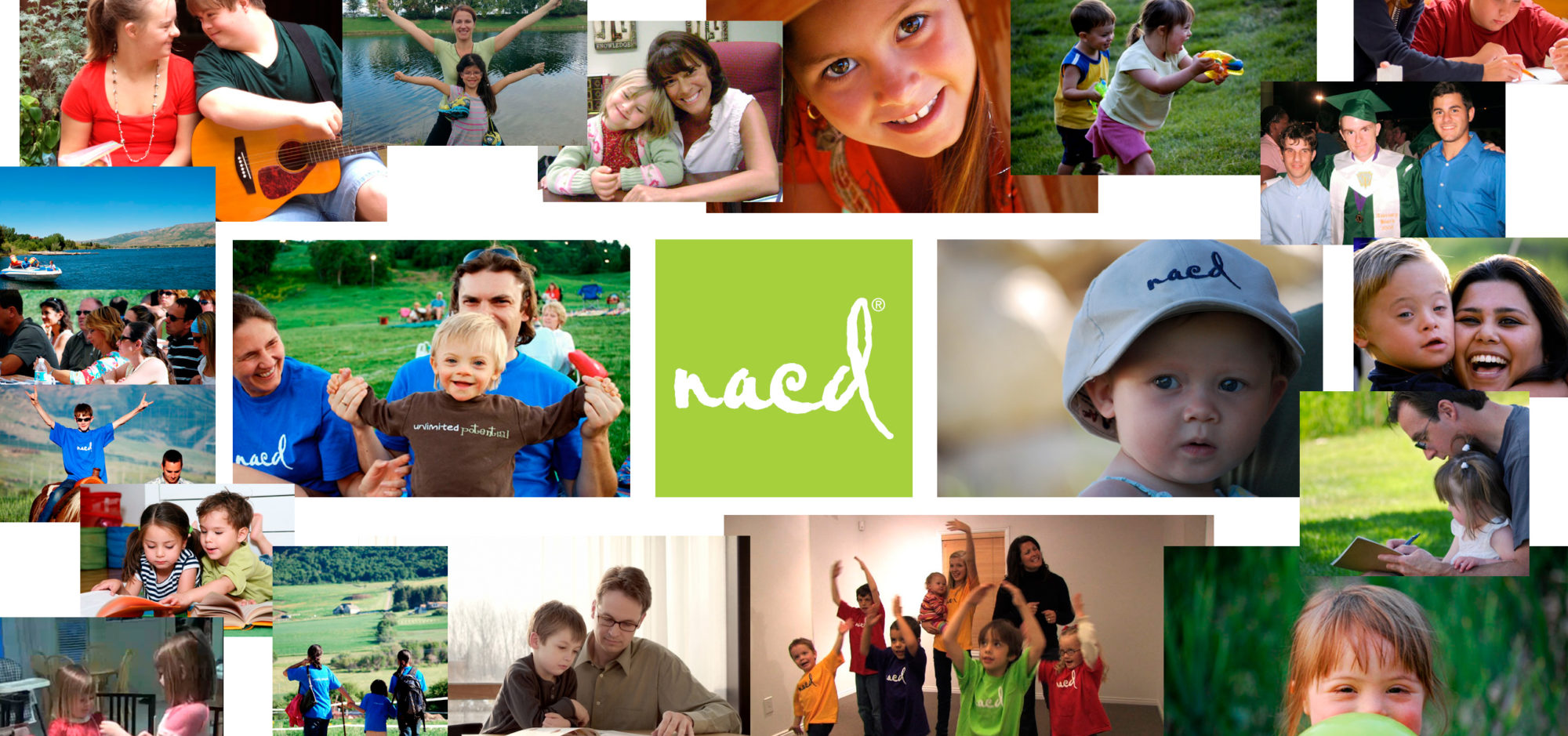 It’s Autism Awareness Month, so let’s talk about ASD (Autism Spectrum Disorder) and awareness.
It’s Autism Awareness Month, so let’s talk about ASD (Autism Spectrum Disorder) and awareness.
They say you are what you eat. They should also say you are what you attend to and can process. What you perceive, the quality of what goes into your brain through your sensory channels, what you pay attention to and how much of it you can process essentially determines what and how much you learn. In turn, it determines how you can think, what you know, how you develop and ultimately your quality of life.
One way to gauge the level or degree of involvement of those on the autism spectrum is to look at what they give their attention to, their overall level of awareness and the degree to which they are present and engaged. As we look at individuals with sensory issues, which is generally how we refer to those on the spectrum internally at NACD, we start with observation and understanding that individual for the purpose of providing strategies to improve specific and global function.
We can observe virtually any child, watch what they are paying attention to and see how much they are attending to what is happening around them. This gives us a fair sense of what and how much they are learning and developing and what issues need to be addressed. Everyone essentially attends to what is meaningful to us and ignores what isn’t. We can observe any number of children who are on the autism spectrum or who have developmental delays, look at their behavior and develop insight as to their needs. For example, if there is a child staring at a ceiling fan rotating over and over, or a child who is in the corner waving their hands in front of their face and making repetitious sounds, or a child sitting quietly sucking on and smelling their fingers, or a child who is pacing around the room, relatively oblivious to anyone or anything going on in the room, then we know we have children who are essentially not present, not learning and not developing. We could also observe other children who are trying to get our attention, or are going around the room investigating and getting into things, looking at this and that, touching or banging things, knocking things over—children who are much more present and are learning and developing at a much higher rate. The varying degrees of a child’s involvement and of being present is essentially a representation of their level of severity and where they are on the spectrum.
The first group of children are not only not learning, they are engaging in behaviors that are making them more and more isolated, further delaying the normal development of their sensory channels and teaching their brains to ignore more and more of what is in their world. For their brains, the meaningless is meaningful and significant to their brains, while what should be meaningful is essentially meaningless. The exploring child is looking for meaning, for significance and that child’s brain will continue to do this with every new opportunity. The degree to which any child is inquisitive, attending to the right things (be it making eye contact because they know there is something to learn from observing your face and listening to your words, or looking at the people and things in their environment and interacting with that environment), the more present they are, the better and higher their level of function, the more and faster they are learning and developing.
Neuroplasticity, that thing which permits the brain to change and develop, occurs through input. It does not simply develop because we are getting older. The quality and quantity of the input the child’s brain receives determines not only how rapidly the child develops, but also how they develop. Good input generates good change and development, while bad input produces negative changes to the brain and impairs development.
Awareness, being present, is that which determines the direction and rate of development. For any child with a developmental delay, normalizing sensory function, redirecting them when they are “stimming” or engaging in DSAs (Debilitating Sensory Addictions or sensory addictive behaviors) and providing them with as much specific, appropriate, targeted input as possible is the formula that can produce the desired results and foster development. Positive neuroplasticity occurs when we provide the child with specific, targeted input that is delivered with sufficient frequency, intensity and duration.
For those children on the lower end of the spectrum, intensive neurodevelopmental intervention is needed to help bring their developmental pieces together. For any child with lesser issues or with a developmental delay who cannot process information or coordinate movements well enough to play independently, they are at risk of getting too good at infantile sensory play, getting developmentally stuck and need intervention to rapidly develop their sensory function and processing. Every child needs attention. Every child needs specific appropriate input and opportunities to maximize their potential. As parents, educators and those assuming various roles in helping children become all they can be, we need to perceive every child as having unlimited potential and do all we can do to provide them with opportunities commensurate with that perception.
All parents should be aware of what your child is and isn’t attending to. Pay attention to how present they are and be proactive. Bring them into this world or they will go into their own. If they have a problem, don’t perceive it as a disease, let alone an incurable disease, perceive it for what it is—one of many developmental steps that you need to help them achieve on their way to achieving their unique potential.
—Bob Doman


 It’s Autism Awareness Month, so let’s talk about ASD (Autism Spectrum Disorder) and awareness.
It’s Autism Awareness Month, so let’s talk about ASD (Autism Spectrum Disorder) and awareness. I’m in LA, flew in this morning and spent the afternoon working with a couple of great families.
I’m in LA, flew in this morning and spent the afternoon working with a couple of great families. My trip started off with Ally. Ally is one big giant perpetual smile. She smiles as she comes in the door, she smiles as I speak with her parents about what a “turkey” she can be, she smiles after she shows me her walking and she smiles and waves goodbye—“See ya Bob.” Ally is twelve and is now, after lots and lots of work, starting to walk on her own. She is in a typical classroom and doing well academically. She still needs large print, but reads well. She talks up a storm and is generally a delight, although she loves to torment her mom and dad. I first saw Ally when she was 10 months old. Ally was shaken by her babysitter when she was four and half months old and severely brain damaged. By the time I saw her, just months after her injury, she had shunts in both sides of her brain to relieve the pressure, had suffered retinal hemorrhages and essentially had no vision, was diagnosed with infantile spasms (severe seizures), was on two different seizure medications and was recovering from breaks to both legs and her left arm. Devastating, but Ally’s parents are exceptional folks and have worked wonders with her. Every time I see Ally I remember where she was; and although she has many pieces yet to be put together, she is a trooper, doing great and smiling!
My trip started off with Ally. Ally is one big giant perpetual smile. She smiles as she comes in the door, she smiles as I speak with her parents about what a “turkey” she can be, she smiles after she shows me her walking and she smiles and waves goodbye—“See ya Bob.” Ally is twelve and is now, after lots and lots of work, starting to walk on her own. She is in a typical classroom and doing well academically. She still needs large print, but reads well. She talks up a storm and is generally a delight, although she loves to torment her mom and dad. I first saw Ally when she was 10 months old. Ally was shaken by her babysitter when she was four and half months old and severely brain damaged. By the time I saw her, just months after her injury, she had shunts in both sides of her brain to relieve the pressure, had suffered retinal hemorrhages and essentially had no vision, was diagnosed with infantile spasms (severe seizures), was on two different seizure medications and was recovering from breaks to both legs and her left arm. Devastating, but Ally’s parents are exceptional folks and have worked wonders with her. Every time I see Ally I remember where she was; and although she has many pieces yet to be put together, she is a trooper, doing great and smiling! St. Louis started with Abby, a seven-year-old ball of fire. She runs in the room with her mom and throws her arms around me and gives me a big smack on the cheek. Abby has Down syndrome, but it surely isn’t slowing her down. She’s in a typical 2nd grade class—academically and socially right there with her peers. But I’d be willing to bet that Abby generates more smiles and warms more hearts per minute than 99.9% of the kids on the planet. Typically, when she leaves her evals she turns, waves, throws me a kiss and impishly says, “Bye, Bobby.” More smiles!
St. Louis started with Abby, a seven-year-old ball of fire. She runs in the room with her mom and throws her arms around me and gives me a big smack on the cheek. Abby has Down syndrome, but it surely isn’t slowing her down. She’s in a typical 2nd grade class—academically and socially right there with her peers. But I’d be willing to bet that Abby generates more smiles and warms more hearts per minute than 99.9% of the kids on the planet. Typically, when she leaves her evals she turns, waves, throws me a kiss and impishly says, “Bye, Bobby.” More smiles!